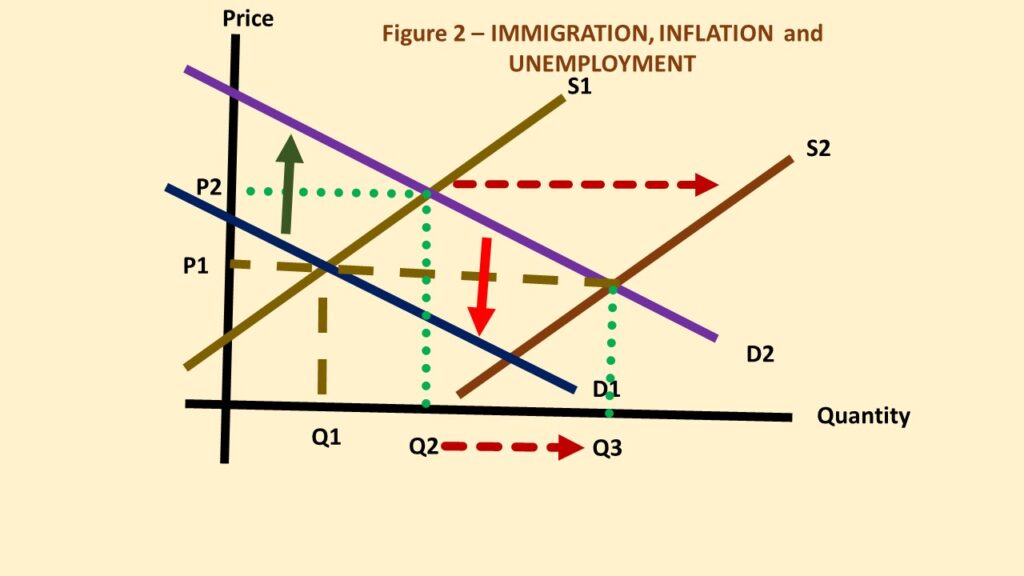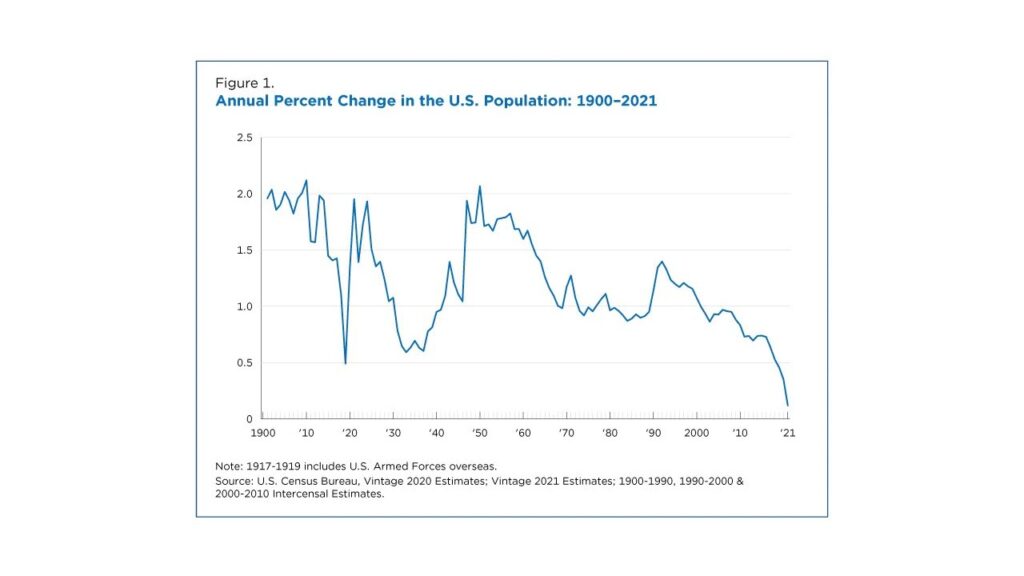
Any policy maker could, in theory push the aggregate demand down toward D1 by shifting the supply curve from S1 to S2. By doing so, more goods and services can be produced–shifting the national output from Q2 to Q3. The question that one might ask is that, why can’t the US pursue this obvious path? Well, as one has learned, again from Econ 101, it all depends on the availability of factor of productions (resources), such as, among other factors, are labor, land, capital, technology, entrepreneurship, etc.
Since the current labor in the US is finite, it will take time, efforts and money to prepare workers up to a point that they are ready to participate. This labor shortages in no doubt affect the US ability to produce output at Q3 level. So, should Uncle Sam wait until the labor becomes available, or manage what is available currently? Based on recent publication from the US Census Bureau, it is pretty obvious that the country has experienced a steady population growth declining, which accelerated starting in 2020. The impacts of labor shortages are obvious, so does the price that the Americans have to pay at the grocery stores.
Perhaps, and AAEA hopes, that these analyses help both the opponents and proponents of immigration debate to understand these complex issues. The inflation-employment analyses need to be tied to the input market. If the public policy restricts the movement of labor that is coming to this country, surely S2 cannot be shifted fast enough to keep up with the growth in demand. As results, inflation is going up.

The old saying exclaimed “it takes two to tango”. One cannot expect to pay a happy meal price for Osetra Caviar, at Atelier Crenn in San Francisco, California. Always remember–the cause and effect.
